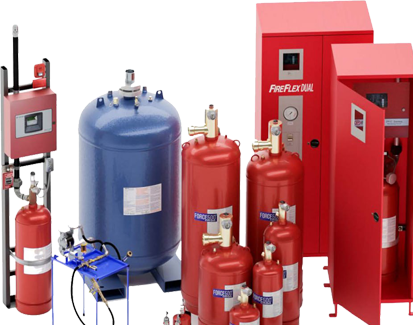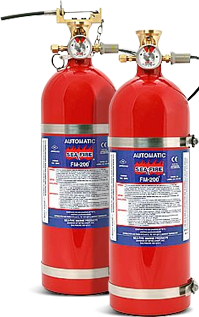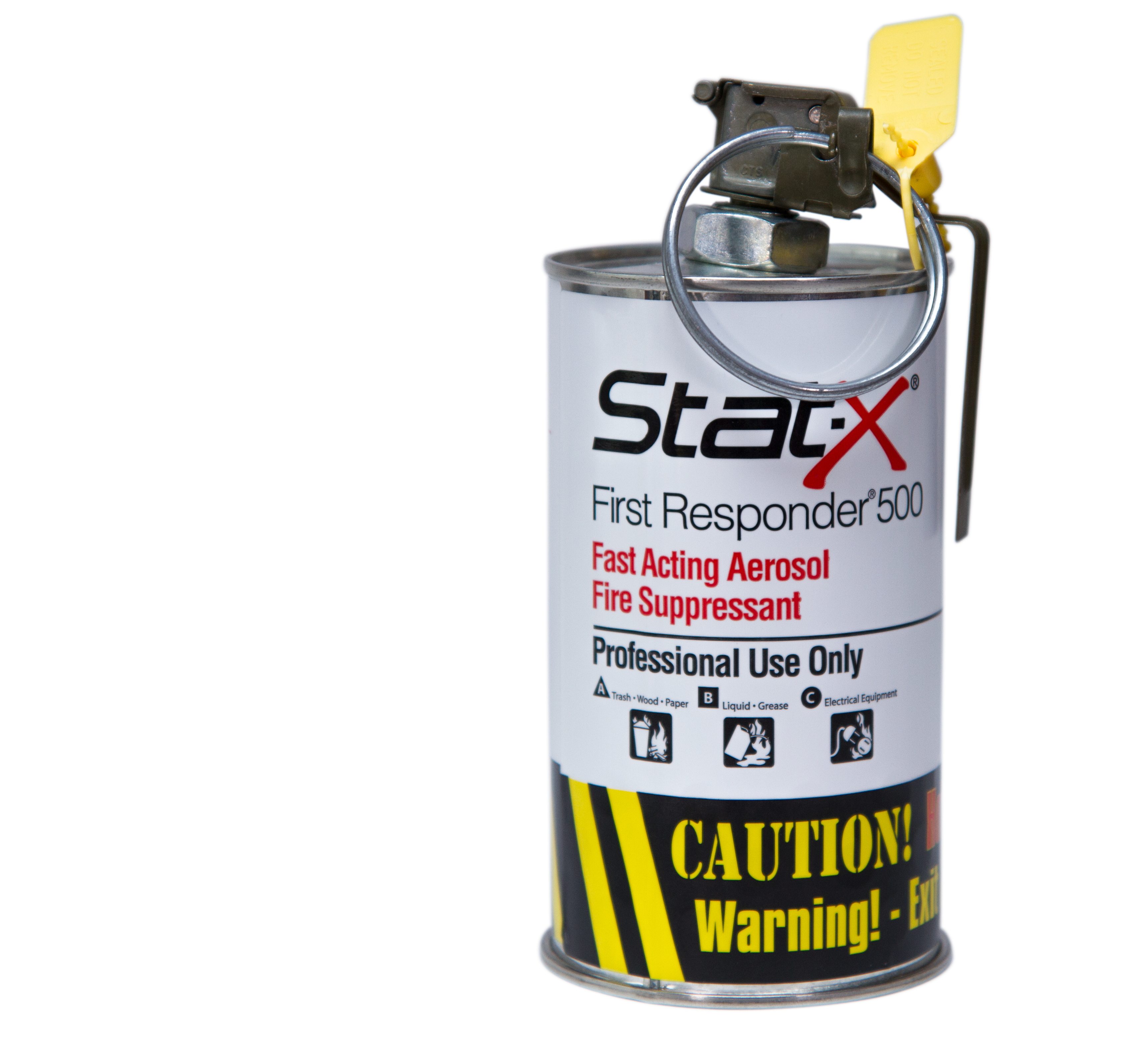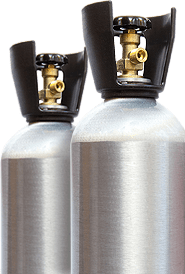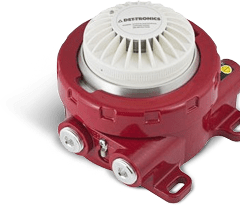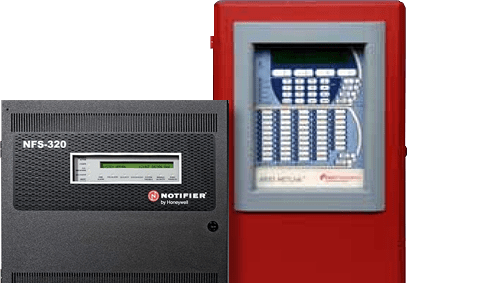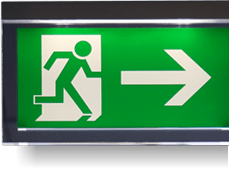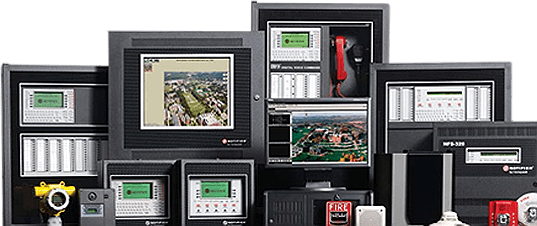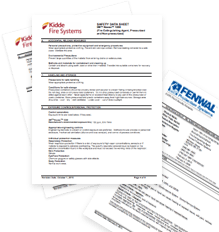What is the right type of fire extinguisher for your business?
Choosing the right fire extinguisher is essential for workplace safety. Different fire hazards require specific extinguisher types to ensure effective suppression and compliance with fire safety regulations. Understanding these classifications helps protect property, employees, and operations.
Key Takeaways
- Fire extinguisher types – Class A, B, C, D, and K extinguishers are designed for different fire hazards.
- Business-specific needs – Office spaces, kitchens, and industrial facilities require specialized extinguishers.
- Regulatory compliance – Businesses must follow Canadian fire codes to ensure proper fire protection.
- Maintenance & inspections – Regular testing and servicing are crucial for extinguisher reliability.
For every business, fire extinguisher s are essential pieces of equipment that can save lives and properties in the case of a fire.
The Occupational Safety and Health Administration (OSHA) requires all businesses to provide their employees with portable fire extinguishing equipment. However, finding the best fire extinguisher can be challenging with so many types available. Understanding the different classes of fires and fire extinguishers is therefore essential for every business owner.
Explore further
5 Classes of Fire
Fire classes determine how quickly a fire may burn, how much damage it can cause, and the best way to suppress or quench it. Below are the five classes of fire and how best to suppress them.
Class A Fires
Class A comprises of ordinary combustibles such as paper, fabric, wood, and trash. These types of fires may be quenched by dry chemical powder, wet chemical suppression, and water.
These are the most common types of fire, and have relatively low ignition temperatures. This means that they quickly burn out once their oxygen or fuel is depleted.
Class B Fires
Class B fires occur when flammable liquids such as kerosene, methane, gasoline, paint, alcohol, oil-based coolants, or propane ignite. Although Class B fires are most common in industrial settings, they may also occur in commercial and residential settings. This fire class has a low flashpoint, meaning it burns easily at any temperature if exposed to a fire source.
Class C Fires
Class C fires have live electrical currents or equipment as a fuel source. Such fuel sources may include appliances, electric tools, motors, and transformers. Class C fires are common in industrial settings with electrically-powered equipment. Electrical fires cannot be quenched with water - instead, they require chemical or cleaning agents.
Class D Fires
Class D fires originate from combustible metal fuel sources. Common combustible metals include magnesium, aluminum, potassium, magnesium, zirconium, and titanium. These combustible metals are often found in manufacturing plants and laboratories.
Water should not be used to fight these fires, as it can cause some combustible metals to explode. Dry powder agents should be used instead.
People also search
Class K Fires
Class K fires refer to cooking fires that result from the combustion of a cooking liquid such as vegetable fat, animal fat, grease, or oil. They are most common in the food service and restaurant industry.
Question: What type of fire extinguisher is best for my business?
Answer: The right fire extinguisher depends on the fire hazards in your business. Offices need Class A or ABC extinguishers, kitchens require Class K, and industrial settings may need Class D for metal fires. Compliance and regular maintenance are essential for safety.
Types of Fire Extinguishers
There are several different types of fire extinguishers best used for each class of fire.
1. Carbon Dioxide (CO2) Extinguisher
CO 2 extinguishers are filled with incombustible carbon dioxide gas under high pressure. You can identify a CO 2 extinguisher by its hard horn and the absence of a pressure gauge. The tension in the cylinder is so high that bits of dry ice may shoot out the horn when used.
CO 2 cylinders are usually red, and range between 5 Ibs to 100 Ibs, or bigger. Their hard horn is placed in a long, flexible hose; this type of extinguisher is best used for Class B and C fire types. Businesses needing carbon dioxide extinguishers include server rooms and shops with computer-based till systems.
2. Chemical Foam Extinguisher
The main container of chemical foam extinguishers is filled with an alkali solution (usually sodium bicarbonate), an acid (aluminum sulphate), a stabilizer, and water. The stabilizer is then added to make the foam firm and last longer. When they react, these chemicals form foam or a froth of bubbles filled with CO 2 .
The inner container is secured using a cap held by a plunger. The cap is released when the plunger is unlocked by turning it, and the extinguisher is then upturned for the two liquids to mix. Examples of businesses that need this equipment include rubber plants, bookstores, clothing stores, etc.
3. Dry Chemical (Class ABC) Extinguishers
A dry chemical extinguisher uses mono ammonium phosphate, a dry chemical that can quickly extinguish many types of fires by smothering the flames. It quenches fire by burning material with a thin layer of dust to separate the fuel from the oxygen.
These types of extinguishers are very effective at putting out fires because their powder also works to interrupt the chemical reaction of fires. Pressure stored in cylinders can last for 45 seconds and reach 3-4.5 meters. Businesses that require dry chemical extinguishers are mostly gas stations.
4. Dry Powder (Class D) Extinguishers
Class D extinguishers contain a blended Sodium Chloride dry powder extinguishing agent (B570). This solution suffocates fires and removes heat.
The heat from fires causes the solution to form a crust, excluding air and disappearing heat from burning metal. C571 also contains a copper extinguishing agent. The only category of Class D fire extinguishers is a Dry Powder extinguisher.
The powder agent in this type of extinguisher may be granular sodium chloride, powdered graphite, or copper-based, which can help separate the fuel from the oxygen. Although dry powder extinguishers are effective for Class D fires, they cannot be used to quench any other fire class. Any business involving the refinement and conversion of metals will need this equipment.
5. Liquid Gas Extinguisher
Liquid gas extinguishers are the best suppressants for fires fueled by lacquer or gas, oil, or paint. They help quench Class B, C, and some Class A fires. Liquid gas extinguishers have a short range, and empty within 10 seconds.
Examples of businesses that can benefit from this type of fire extinguisher include oil, paint, and lacquer dealerships, along with gas companies.
6. Water or Water Mist Extinguisher
This type of extinguisher contains and dispenses deionized water in a spray that is non-toxic and non-conductive. When discharged, water expels through a spray nozzle, making a fine mist curtain that cools the fire and reduces the oxygen feeding the inferno, thus suffocating it.
Water mist extinguishers are safe for books, tapestries, electronics, etc., and can be used to quench Class A and Class C fires. Examples of businesses that can use water mist extinguishers include server or electrical rooms, historic buildings, hospitals, and clean rooms.
7. Wet Chemical Extinguisher
While these are primarily designed to be used for Class F fires (cooking oils and deep fat fryers), they can also be used on Class A fires (fabrics, paper, and wood) and Class B fires (combustible liquids).
Wet chemical extinguishers are designed with yellow labels. They are usually supplied with a long lance, ensuring the foam is safely deployed. The wet chemical creates a thick, soapy foam-like blanket over the burning fat or oil, stopping oxygen from getting to the fire and smothering the flames. Businesses that should use wet chemical extinguishers include restaurants and hotel kitchens.
Two Types of Fire Extinguishers
The fire risk applicable to your type of business determines the kind of fire extinguisher your business needs.
1. Stored Pressure Fire Extinguisher
Stored pressure fire extinguishers are a common type of extinguisher. They are filled with compressed nitrogen gas used to fuel a dry chemical agent saved in the same cylinder as the dry chemical. A dry chemical extinguisher uses dry air or nitrogen to propel the agent onto the fire.
The most common stored pressure extinguishers are ABC and BC dry chemicals. This type of fire extinguisher can be operated using the PASS Method.
2. Cartridge Operated Fire Extinguisher
A pressure cartridge must be initiated to pressurize a cartridge-operated fire extinguisher with powder or another agent inside. A dry chemical is usually kept within the unpressurized cylinder for cartridge-operated extinguishers.
The fuel for this type of extinguisher is either "dry air" or nitrogen in a different cartridge attached to the device side. Side cartridge-operated units save the dry chemical in the compressed nitrogen gas in a separate cartridge or a non-pressurized container.
How Do You Use a Fire Extinguisher?
Employers are responsible for educating their employees on how to use fire extinguishers. Staff must also be trained to use this equipment appropriately.
Most extinguishers are operated using the PASS technique: P for pulling the pin, A for aiming low at the base of the fire, S for squeezing the handle, and S for sweeping from side to side.
Steps to Use a Fire Extinguisher
- Press the fire alarm and inform the fire department if necessary.
- Find a safe evacuation path before approaching the fire. Ensure that heat, smoke, or fire won't come between you and your evacuation path.
- Select the correct type of fire extinguisher.
- Release the extinguisher within its effective range using the PASS technique (pull, aim, squeeze, sweep).
- Move away from the extinguished fire in case it erupts again.
- If the extinguisher finishes and the fire still burns or progresses, evacuate immediately.
Storing Your Fire Extinguisher
Fire extinguishers should be stored upright in a visible location without environmental obstruction and with signage for easy accessibility, regardless of height. They should be stored preferably above freezing temperatures.
Fire extinguishers should be kept within the recommended travel distance of 75 feet, and storage placement is vital, as precious time can be wasted trying to find an extinguisher.
Mounting Fire Extinguishers
- Find a proper place for your extinguisher that is accessible and not blocked by anything. Also, ensure the spot is near an exterior door for easy escape. Garages, kitchens, and workshops are common sites you can use.
- Install fire extinguishers that weigh below 40 pounds, so that the top handle is not more than 5 feet above the floor.
- Familiarize yourself with hardware and mounting instructions, such as wall mounting brackets. These types of brackets differ in type, shape, size, etc. The two most common types of mounts are metal brackets and wall hooks.
- Using an electronic stud finder, locate a wooden wall stud to securely support the extinguisher's weight. Attach the metal bracket and wall hook to the wooden stud with screws and hang the extinguisher on the hook. Also, turn the extinguisher so that the instructions are facing outward and are visible.
Vertical Storage of Fire Extinguishers
An extinguisher should be stored upright if it is a dry chemical extinguisher. It is always advisable to store extinguishers vertically, especially if they are not pressurized. Otherwise, an unpressurized extinguisher may shift, which could cause its gas not to release properly.
Keeping Your Extinguisher Away from Harsh Weather Conditions
Covers and cabinets can safeguard your extinguisher from cold and wet weather. However, some extinguishers need extra protection from freezing weather temperatures.
Foam and water extinguishers installed outside or in places with no heating are more vulnerable, as their internal lining may be damaged and their contents may freeze.
How Many Fires Extinguisher Does My Business Need?
The number of fire extinguishers your business needs depends on your premises' square footage and the guidance in the BS 5306 on fire extinguishing installations. The BS 5306 provides the formula you need for calculating your number of Class A extinguishers. You should also consider the extinguishing power of your equipment, which is determined by its fire rating.
If your business is spread over many floors, you should provide at least two fire extinguishers for each level. However, you can use one if the floor is below 100m 2 in area. You can also reduce the number of extinguishers if an automatic fire suppression system is fitted.
Furthermore, the number of fire extinguishers you need also depends on the nature of the business. For instance, if your company sells or uses many electrical items, consider a CO 2 fire extinguisher, designed to combat electrical fires.
Commercial Fire Extinguisher Requirements
The AS 2444-2001 standard for fire blankets and portable fire extinguishers dictates the selection and location details of extinguishers which must be strictly followed when installing fire extinguishers in buildings. This standard also states that fire extinguishers for commercial buildings must be placed at least 10 cm above the floor, but not above 1.2m.
High-risk areas such as kitchens or places with high-concentration of appliances and equipment must also have fire extinguishers nearby. The typical recommendation is to have at least one located within a 15m radius of every high-risk area - this means that even though the highest travel distance permitted is 75ft, you wouldn't be able to take advantage of the total 75ft if you were in a wide-open area such as a large warehouse. Instead, small fire extinguishers should be installed apart from one another to take advantage of each extinguisher's coverage area and conform to the rooms' shape.
Fire Extinguisher Inspection & Testing
In order to ensure that your extinguisher can be used effectively and reliably during an emergency, perform inspections often. On average, an inspection should consist of the following steps:
- Ensure it is installed in its designated place.
- Ensure that it is easily accessible
- Make sure it is visible, and that signage indicates the extinguisher's location.
- Ensure that the pressure gauge is in the correct position and within operable range.
- Ensure the fire extinguisher is full. You can do this by lifting or weighing the extinguisher.
- For a wheeled extinguisher, ensure that the hose, carriage, tires, wheels, and nozzles are in good condition.
- Operate push-to-test pressure indicators for non-rechargeable extinguishers.
Testing always begins with an external and internal examination of the extinguisher. Remove the components of the extinguisher, and then fill it with water at a specific pressure for a particular time. The extinguisher must be thoroughly dried to remove all the water and recharged and reassembled.
Tanks that need hydrostatic testing include medical cylinders, SCUBA diving tanks, and CO 2 tanks. If leakage or distortion is detected and the cylinder fails the test, it must be condemned.
Contact Control Fire Systems
Control Fire Systems has been serving the citizens of Toronto since 1975, and has grown into a reliable supplier of environmentally friendly Halon 1301 alternatives such as Stat-X Aerosol fire suppression systems and the 3M Novec 1230.
Our services include selling fire suppression systems and fire alarms, along with fire extinguisher installation, maintenance, and inspection. Reach out to a member of our team today for help with all your fire system needs.





